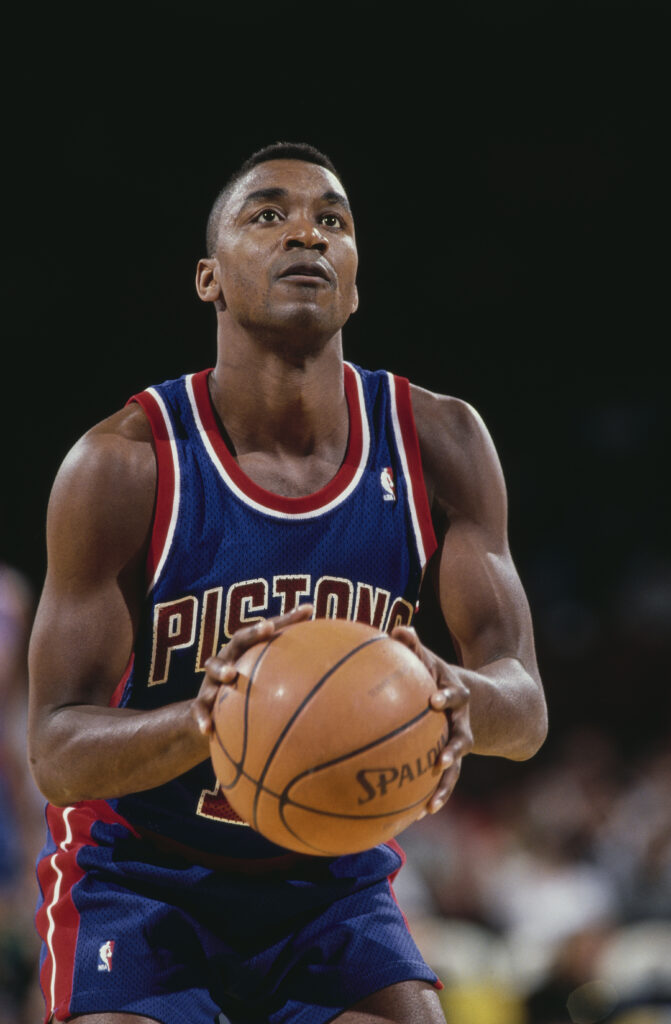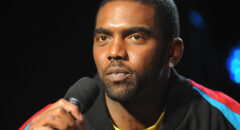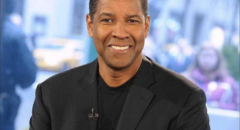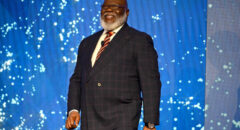
Hall of Famer and former Detroit Pistons guard Isiah Thomas was known for his consistent high-level of play in the NBA for years. Now, in his next stage of life, he’s balancing being a commentator, business owner, philanthropist, and more while dealing with a newly diagnosed condition.
During an appearance on the ‘Come and Talk 2 Me’ podcast with former NBA star Mark Jackson, 63-year-old Thomas revealed that he was diagnosed with the neurological disorder Bell’s Palsy.
“I’ve gotten a lot of love from people saying, ‘Well Isiah’s sick. What’s he going through?’” Thomas said. “And I haven’t really told anybody, right? So, I got Bell’s palsy, and, again, that’s why you see me like this. So, I appreciate the prayers and the love, but that’s what’s happening with my mouth right now.”
“You look good to us,” Jackson responded. “You look great to us.”
Many fans have long wondered if this was the case with Thomas and he finally revealed the news. During an interview with Forbes, Thomas noticeably had his lips appear asymmetrical and his tongue seemed to move unevenly.
This sparked some fans to question what was going on and one fan pointed out in the comments that he could have been a stroke or something kind of disorder that looks like paralysis. While they didn’t know the exact issue affecting Thomas, many felt that something was wrong.
During his long career, Thomas averaged 19.2 points, 3.6 rebounds, and 9.3 assists per game. Thomas is regarded as one of the best point guards to ever play in the NBA and he played his entire career with the Pistons.
Thomas was a 12-time All-Star during his playing days, winning the MVP award in the games twice. He also made the All-NBA First Team three times, the All-NBA Second Team twice, and was the league assists leader during the 1985 season.
What is Thomas’ Condition and How It Affects His Body
Bell’s palsy is a neurological disorder that causes temporary or permanent facial paralysis or weakness on one side of the face:
Symptoms
Symptoms include:
- Sudden weakness or paralysis on one side of the face
- A drooping eyebrow and mouth
- Drooling from one side of the mouth
- Difficulty closing one eyelid, which causes eye dryness
- Blurry vision
- Hearing problems, such as having things sound distorted or unusual
Causes
Bell’s palsy occurs when the facial nerve (the 7th cranial nerve) becomes injured or stops working properly. The inflammation of the facial nerve may be caused by a virus.
Treatment
There’s no known cure for Bell’s palsy, but most people recover completely. Treatments include:
- Artificial tears
- A patch to protect the affected eye
- Using tape to close the affected eyelid at night
- Medications such as corticosteroids or pain-relieving medications
- Massage or facial exercises
- Botox injections
Who is more likely to get this Condition?
Bell’s palsy can affect anyone of any gender or age, but most often affects people ages 15 to 45.
A risk factor is a condition or behavior that occurs more frequently in those who have a disease or condition, or who are at greater risk of getting a disease, than in those who don’t have the risk factor. Risk factors for Bell’s palsy include pregnancy, preeclampsia, obesity, hypertension, diabetes, and upper respiratory ailments.
The exact cause of Bell’s palsy is unknown. There is some evidence that inflammation and swelling of the cranial nerve VII is involved, but the reason for this swelling is unclear.
Possible triggers of Bell’s palsy may include:
An existing (dormant) viral infection, such as herpes simplex or varicella (chickenpox)
Impaired immunity due to stress, sleep deprivation, physical trauma, minor illness, or autoimmune syndromes
Infection of a facial nerve and resulting inflammation brought on a disorder such as Lyme disease
Damage to the myelin sheath (the fatty covering that insulates nerve fibers)

How He Built His Legacy on the Court
The youngest of 9 children, Thomas was born on April 30, 1961, in Chicago, Illinois, and grew up in the city’s West Side. He started playing basketball at age three and would dribble and shoot baskets as the halftime entertainment at Catholic Youth Organization games.
Thomas’s father, Isiah Thomas II, was an army veteran wounded in the Battle of Saipan.[1] He later attended trade school, eventually becoming the first black supervisor at International Harvester in Chicago. When the plant closed, the only work he could find was as a janitor; the family fell into hardship. Isiah Thomas II left the family when Isiah was a young child.
Isiah Thomas III attended Our Lady of Sorrows School and St. Joseph High School in Westchester, which was a 20-minute commute from his home. Playing under coach Gene Pingatore, he led St. Joseph to the state finals in his junior year and was considered one of the top college prospects in the country.
In the Eastern Conference Finals of the 1991 NBA playoffs, the two-time defending champion Detroit Pistons faced the Jordan-led Chicago Bulls in the playoffs for the fourth consecutive season. The Pistons had eliminated the Bulls in each of the three previous years, but this time they suffered a four-game sweep at the hands of the Bulls (who would win the first of three consecutive, and six overall, NBA championships between 1991 and 1998). The series was marked by a number of verbal and physical confrontations. With 7.9 seconds remaining in the fourth game, Laimbeer organized a walk-out and Thomas and all of his teammates—except Joe Dumars and John Salley—walked off the court, refusing to shake hands with the Bulls. Replicating what was done to them by the Celtics teams before. In 1992, Thomas was passed over for the Dream Team apparently because of his strained relationship with Jordan.
In September 2009, during Jordan’s Hall of Fame acceptance speech, Jordan thanked Thomas and others for giving him the motivation he needed to compete in the NBA.
“I’m dealing with it, I’m showing up, I ain’t taking off — but I just wanted everybody to know that I appreciate your prayers and thank you for everything,” he said.








